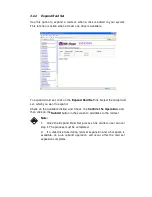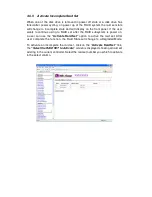
3.7 Volume Set Function
A volume set is seen by the host system as a single logical device. It is
organized in a RAID level with one or more physical disks. RAID level refers
to the level of data performance and protection of a volume set. A volume set
capacity can consume all or a portion of the disk capacity available in a
raid set. Multiple volume sets can exist on a group of disks in a raid set
.
Additional volume sets created in a specified raid set will reside on all the
physical disks in the raid set. Thus each volume set on the raid set will have
its data spread evenly across all the disks in the raid set.
3.7.1 Create Volume Set
The following is the volume set features:
1.) Volume sets of different RAID levels may coexist on the same raid set.
2.) Up to 16 volume sets in a raid set can be created by the RAID subsystem
controller.
To create volume set from raid set system, go to the main menu and click
on the
Create Volume Set
link. The “
Select the Raid Set”
screen will show
all raid sets. Check
on a raid set that you want to create and then click
on the
Submit
button.
The new create volume set allows user to select the Volume name, capacity,
RAID level, strip size, SAS Port/LUN, Cache mode, and tag queuing.
















































